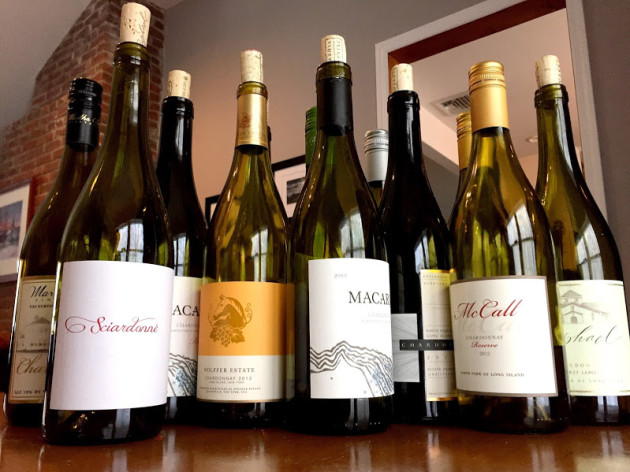You may have noticed a lot of chardonnay-related activity here and on the site’s Facebook page of late. That was because of this story, which is in the spring issue of Long Island Wine Press. Check out the excerpt and then click the link below to read the full story.
For the last five years of the decade I’ve spent writing about wine, I’ve largely ignored most Long Island chardonnay. Rarely tasted it, let alone drank it. Particularly if it was raised in an oak barrel.
Sure, some unoaked Long island chardonnay made it into my glass — it’s bound to happen with so much of it around — but why bother with those when there are other white wines available that are so much more interesting and dynamic?
I’ve gained a reputation among local wine folks for — among other things, I’m sure — my perceived dislike of this particular varietal.
I say “perceived” because it’s a bit more nuanced than just, “Lenn doesn’t like chardonnay.” While it’s true that I don’t enjoy weighty, buttery, vanilla-soaked, heavy oak footprint chardonnay, I don’t lay that at the feet of the grape itself. That’s the winemaker and what he or she is choosing to do with the grapes once they’re picked. It’s also about how chardonnay is grown, and where.
Some of the most interesting and exciting wine experiences of my life have centered on white Burgundy and Chablis (the real stuff). That’s chardonnay. Heck, when I first started drinking wine regularly in graduate school, it was often cheap Australian chardonnay. Black Opal and Blue Marlin were favorites. I’ve long since moved beyond those mass-produced, soulless industrial wines, but still, I don’t have any innate disdain for the grape.
Instead, I turned my back on Long Island chardonnay because it just wasn’t compelling. Even the undeniably well-made stuff never struck me as distinctive or uniquely Long Island. It lacked expression of terroir.
The rest of this Long Island Wine Press story is available on northforker.com.

